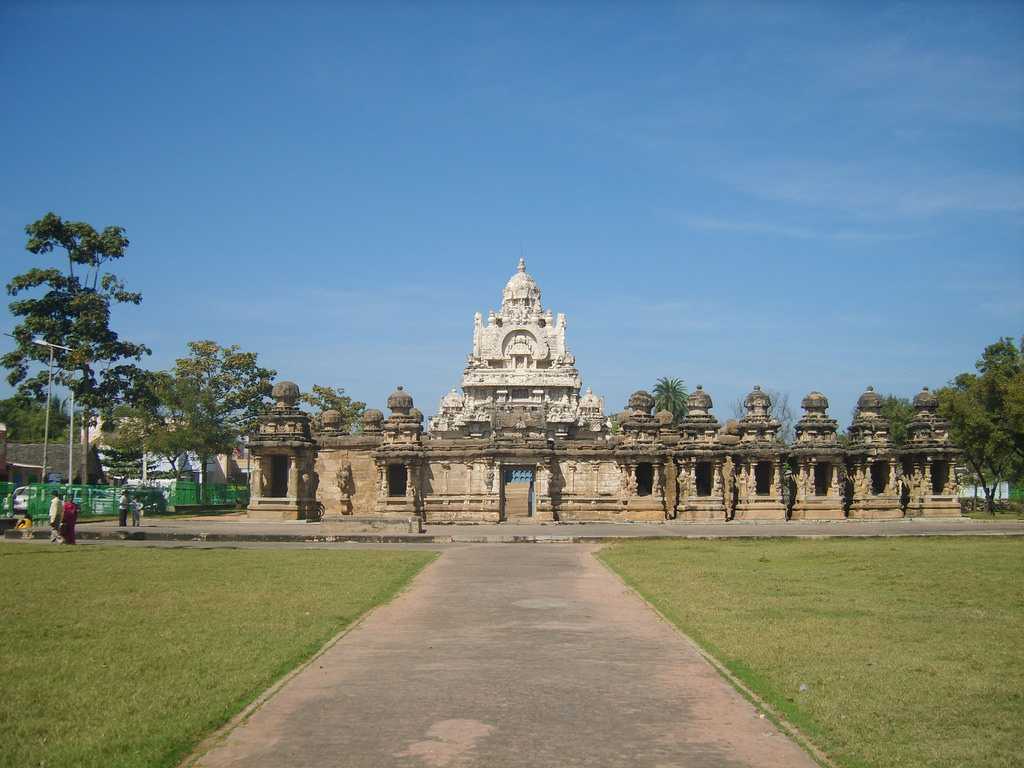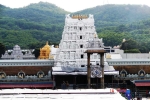"Golden City of a Thousand Temples"
Kanchipuram Tourism
Widely known for its beautiful ?'Kanchipuram sarees' and also referred to as the 'golden city of a thousand temples', Kanchipuram in Tamil Nadu is a popular tourist attraction.
Kanchipuram or Kanchi attracts a lot of tourists from all over the world who are interested in Hinduism or just want to enjoy the marvel of South Indian architecture and grandeur. It is particularly known for being a culture and philosophical hub. With such an association being made with the city, it is only natural that this destination has become such an influential centre in these avant-garde times. The city is home to the famous Kanchi Kamakshi Temple, which is the highly revered abode of Kamakshi (Goddess Parvathi) - consort of Lord Shiva. The Kailasanathar Temple is also popular and is known for its magnificent architecture. The highest, largest and most impressive temple in the town, spanning 40 acres and dating back to the Pallava period is the Ekambeshwarar Temple. The Kanchi Mutt holds kutcheris or South Indian classical music concerts in the evenings.
Download Kanchipuram PDF Guide >
What's Great?
Lots of beautiful and ancient temples. Cheap and delicious food.
What's not so Great?
Hot and slightly congested. Roads are not in a very good condition.
For Whom
People who wish to go on a pilgrimage should visit Kanchipuram. Also perfect for those interested in mythology and architecture.
Etymology of Kanchipuram
Kanchipuram has also been known as Kanchi, Kanchipura or Kanchipuraka during the ancient times of the Maurya and the Pallava dynasties. According the legend, the name Kanchipuram is derived from the words Ka and Anchi. Ka refers to the Hindu God Brahma and Anchi refers to his worship of God Vishnu. During the British period, the town was known as Conjeevaram.
Culture of Kanchipuram
The city?s culture includes a mix of different religions like Jainism, Buddhism, Hinduism and Muslim. Buddhism is believed to have laid its roots as early as back as the 1st century in the city, as was Jainism. In the Hindu religion, Kanchipuram is regarded as one of the seven holiest cities in India and is a pilgrim site for both Saivites and Vaishnavites. There are numerous beautiful temples dedicated to the Lords Shiva, Muruga and Vishnu in Kanchipuram. It is also home to the famous Hindu monasteries - the Kanchi Matha and the Upanishad Brahmai Mutt. As Kanchipuram was under the Mughals and the Nawabs of South India for a considerable period, the city also has a significant Muslim influence and has two mosques.
Silk Sarees
Once believed to have been woven for the Gods themselves, the beautiful Kanchipuram silk sarees are extremely popular all across the country. Woven with pure mulberry silk, the zari for the saris comes from Gujarat and more than one weaver is required to work on the sari at a time to create its exquisite designs. The saris are available in many gorgeous colours, and the heavier ones with gold threads are generally worn for festive occasions. The pallus and borders are generally intricately patterned with images found in South Indian temples, and also paintings by Raja Ravi Verma and scenes from the epics like Ramayana and Mahabharata.
History of Kanchipuram
The ancient town of Kanchipuram has been called 'The Benares of the South, by the famous poet Kalidasa. The city has a rich history dating back to the 2nd century BCE and was believed to have been a part of the Dravida Kingdom of the Mahabharata. Kanchipuram has been ruled by many great and powerful dynasties. As a part of the Pallavas kingdom, they contributed immensely to the development and architecture of the city, building roads and many famous temples including the Kanchi Kailasanathar Temple and the Varadharaja Perumal Temple. This was followed by the Chola reign in about 890, and the city was served as the capital of their kingdom. The Vijayanagaras defeated the Cholas in around 1361, and following their long reign which ended in the 1600s, the city witnessed a long period of turmoil. Many forces -like the Golcondas, the Bijapur, and the Marathas briefly captured the city before it went under the Mughal Empire under Aurungzeb. Kanchipuram has also served as a strategic battleground for the British East India company?s Carnatic Wars against the French, and also the Anglo Mysore wars of the 18th century.
Itinerary
Kanchipuram can be covered within a day, except during the time of temple festivals when you may need to stay overnight. Reach Kanchipuram by morning. Sample the famous Kanchipuram idly for breakfast. Visit the Kanchi Kamakshi Amman temple and the Kailasanathar Temple. Visit the Kumarakottam Temple dedicated to Lord Kartikeya. After lunch, visit the Varadaraja Perumal Temple in the afternoon. Later, check out the exclusive silk saree outlets to admire and purchase authentic silk sarees. The temples are highly crowded during weekends, so it is advisable to visit during the weekdays.
Restaurants and Local Food in Kanchipuram
Kanchipuram is where the typical South-Indian food gets all the more interesting and delicious, with the cities own take on the classics to make the state's platter richer and delicious. While here, you cannot miss the popular South-Indian platter with its delicacies likeRasam, Sweet Pongal, Payassam, Sambhar, Idli, Vada, Dosa. Other than these, do try the'fourteen Idli', a dish with 14 idlis and sambhar as well as a local favorite calledKovil Idliswith dry garnishing of pepper, ginger and cumin.
View 3 Restaurants in Kanchipuram >>
Oct-Mayis the best time to visit Kanchipuram
The festivals that are celebrated with much show and gaiety are Brahmothsavam (January), Garudothsavam (April) and the Chariot festival (May). Pongal during the January is an important festival which is celebrated with pomp and delicious feast and religious prayers and processions. Maha Shivaratri during February-March is another religious festival celebrated in Kanchipuram with devotion and enthusiasm. For sightseeing, Best season to visit Kanchipuram is October to March as the temperatures do not touch extremes and you can roam around freely.
Weather in Kanchipuram
Loading...
Kanchipuram in Summer (March - May)
March - May is when some important temple festivals like Masi Mahotsav take place. Certainly, a good time to visit.
Kanchipuram in Monsoon (June - September)
The monsoons bring heavy rain in the area along with the cool breeze. However, Kanchipuram tends to get flooded during this time so, it is advised to avoid visiting the place during the monsoons.
Kanchipuram in Winter (October - February)
The winters in Kanchipuram is much like in other parts of Southern India. The temperature ranges between 19 to 29 degrees Celcius.
Monthly Weather in Kanchipuram
Month
Avg. Minimum (°C)
Avg. Maximum (°C)
January
22
30
February
22
31
March
26
34
April
28
37
May
29
39
June
28
38
July
27
35
August
27
36
September
26
34
October
26
34
November
23
31
December
22
30
Comments on Kanchipuram
Post Your Comment


 Kamakshi Amman Temple
Kamakshi Amman Temple Varadharaja Perumal Temple
Varadharaja Perumal Temple Kailasanathar Temple
Kailasanathar Temple Devarajaswami Temple
Devarajaswami Temple Pondicherry
Pondicherry Chennai
Chennai Mahabalipuram
Mahabalipuram Vedanthangal
Vedanthangal Chittoor
Chittoor Tirupati
Tirupati